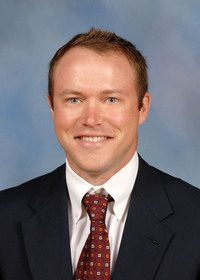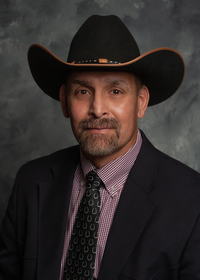Native Warm-Season Grasses as a Forage in MS: Establishment and Maintenance Costs
What Are Native Warm-Season Grasses?
Native warm-season grasses (NWSG) are perennial species that are characterized predominantly by their bunch-type growth, drought tolerance, reduced nutrient demand, and ability to provide wildlife cover and structure for ground-nesting birds, small mammals, and an extensive number of insects. However, one characteristic often overlooked is their ability to generate high-quality forage for livestock with limited external inputs. Following successful establishment and with the use of proper grazing management, NWSG can provide livestock producers in Mississippi with a dependable summer forage source, while simultaneously creating grassland habitat for local wildlife (Figure 1).

Successful establishment and proper maintenance of NWSG stands is crucial to maximizing these species’ true forage potential and extending the life of the stand. For more information on the techniques and practices used to establish NWSG, grazing management of NWSG, and weed control in NWSG, please refer to MSU Extension Publications 2830, 2843, 2868, and 2880.
One question that often arises from interested producers and clients concerning NWSG is how much it costs to establish and maintain stands. Unfortunately, this can be a discouraging factor because seed costs are significantly higher than traditional forage crops such as bermudagrass (Cynodon dactylon), bahiagrass (Paspalum notatum), and tall fescue (Schedonorus arundinaceus). However, native grasses have characteristics that ultimately reduce forage production costs over the long term. These include drought tolerance and reduced inputs (fertilizer applications). They also contribute to increased wildlife habitat and enhance appearance. These attributes are hard to place dollar amounts on, especially in annual budgets. Therefore, producers must take into account the intangible value native warm-season grasses can generate when considering them as a forage for livestock production.
This publication was written to provide landowners and managers with establishment and maintenance costs for NWSG as a forage source. Varying scenarios, typical for most livestock producers across Mississippi, were designed to accurately portray the conversion of existing pastures or hay fields into NWSG stands.
Cost of Establishing and Maintaining NWSG
Establishment of NWSG can often be a slow process, especially if a significant amount of weed control must be accomplished before planting. This is often addressed the growing season before planting. Also, NWSG are notoriously slow to germinate, and developing seedlings can take up to 3 years before they become fully mature. Loss of production during this establishment phase must be taken into account. Direct costs associated with establishment include herbicide and application, fertilizer and application, seed, labor, and equipment operation.
NWSG stands are fairly maintenance-free once they become fully established. Direct costs associated with maintenance of NWSG pastures include herbicide and application, fertilizer and application, prescribed burning (if desired and/or necessary), labor, and equipment operation (Figure 2).

Scenarios
For the conversion of each pasture scenario, several direct expenses are similar. Also, each conversion will take place over a 3-year period—1 year for site preparation, 1 for establishment, and 1 for maintenance. No scenario for timberland or row-crop conversion was assessed. For these two scenarios, site preparation methods will vary considerably from site to site, especially on forested land. In fallow row-crop fields, site preparation is very simple: only a burn-down and pre-emergence herbicide application is necessary before planting (this can be conducted just days before sowing). For a majority of livestock producers in Mississippi who are interested in NWSG, existing pastures are the most common sites chosen for renovation.
In order to establish a successful NWSG stand, proper weed identification and thorough pasture inspection must be done before selecting herbicides for control. For instance, you could have a bahiagrass canopy with bermudagrass present beneath it. One specific herbicide may be very effective in controlling bahiagrass, but the same herbicide will not control bermudagrass. Therefore, subsequent applications will be necessary. For each scenario listed below, the dominant species to be controlled will be addressed. If other species are present (i.e., mixed grass stands), combinations of herbicides may be necessary for complete control. For this publication, herbicides mentioned are specific to the dominant sod grass to be controlled.
Conversion of Bahiagrass Pasture to NWSG
Costs for converting existing bahiagrass pastures into NWSG can be found in Tables 1–3. One of the most effective herbicides against bahiagrass is methsulfuron methyl. Combining this active ingredient with glyphosate and surfactant (methylated seed oil) will result in excellent control of existing bahiagrass pastures that may have other annual or perennial grassy weeds present. This application should be made during the growing season before planting when bahiagrass and other weeds are actively growing. The cost of applying the herbicide is the custom rate for a 600-gallon, 60-foot sprayer published in the 2015 Planning Budgets published by the Mississippi State University Department of Agricultural Economics.
Since the herbicide application is made during the growing season, the existing bahiagrass pasture cannot be grazed. The newly planted NWSG cannot be grazed until the grasses become fully established after year 2. To account for the lost grazing and the need to find new pasture during this time, a cash rental rate of $60 per acre is added to the cost of establishing NWSG in years 1 and 2. Before planting in year 2, a spring burndown using glyphosate and imazapic is used to kill any existing weeds. The cost of planting the NWSG in year 2 is the custom rate for a 15-foot no-till grain drill (published in the 2015 Planning Budgets) plus the price of the seed. Urea, potash, and lime are also applied in year 2 using custom application rates. Year 3 will have a small amount of potash and urea applied at a custom rate, and 2, 4-D will be applied to control weeds. The costs in Tables 1–3 represent an estimate of the costs for planting, fertilizing, and spraying the pastures, but these can vary greatly depending on the size of the pasture and the size of the equipment being used.
Conversion of Bermudagrass Pasture to NWSG
Costs for converting existing bermudagrass pastures into NWSG can be found in Table 4. One of the most effective herbicides to control bermudagrass is imazapyr. Combining this active ingredient with a surfactant (methylated seed oil) will result in control of existing bermudagrass pastures. Depending on the coverage and efficacy of the initial application, subsequent applications may be necessary. Applications should be made during the growing season before planting when bermudagrass and other weeds are actively growing. The costs associated with establishment in year 2 and maintenance in year 3 are the same as with bahiagrass and are found in Tables 2 and 3.
Conversion of Tall Fescue Pasture to NWSG
Costs for converting existing tall fescue pastures into NWSG can be found in Table 5. One of the most effective herbicides against tall fescue is imazapic. Combining this active ingredient with glyphosate and surfactant (methylated seed oil) will result in control of existing tall fescue pastures and other grassy weeds that may be present. This application should be made during the fall growing season before planting when tall fescue and other cool-season weeds are actively growing. The costs associated with establishment in year 2 and maintenance in year 3 are the same as with bahiagrass and bermudagrass and are found in Tables 2 and 3.
|
Item |
Unit |
Price |
Quantity |
Total Amount |
|---|---|---|---|---|
|
Spray |
||||
|
Summer bahiagrass control (600 gal, 60 ft) |
appl |
$6.25 |
1 |
$6.25 |
|
Herbicides |
||||
|
Glyphosate (3 lb a.e.) |
pt |
$2.25 |
4 |
$9.00 |
|
Methsulfuron methyl |
oz |
$5.25 |
1.25 |
$6.56 |
|
Methylated seed oil |
oz |
$0.23 |
32 |
$7.20 |
|
Lost Grazing Revenue |
||||
|
Cash rent |
acre |
$60.00 |
1 |
$60.00 |
|
TOTAL DIRECT EXPENSES |
$89.01 |
|||
|
Item |
Unit |
Price |
Quantity |
Total Amount |
|---|---|---|---|---|
|
Spray |
||||
|
Spring burndown and pre-emergence (600 gal, 60 ft) |
appl |
$6.25 |
1 |
$6.25 |
|
Fertilizers |
||||
|
Potash (60% K2O) |
cwt |
$23.60 |
0.6 |
$14.16 |
|
UAN (32% N) |
cwt |
$18.50 |
1.6 |
$29.60 |
|
Herbicides |
||||
|
Glyphosate (3 lb a.e.) |
pt |
$2.25 |
4 |
$9.00 |
|
Imazapic |
oz |
$4.01 |
8 |
$32.08 |
|
Methylated seed oil |
oz |
$0.23 |
32 |
$7.20 |
|
Seed/Plants |
||||
|
Big bluestem |
lb |
$12.00 |
6 |
$72.00 |
|
Indiangrass |
lb |
$20.00 |
3 |
$60.00 |
|
Little bluestem |
lb |
$20.00 |
1 |
$20.00 |
|
Custom Lime |
||||
|
Lime (spread) |
ton |
$45.00 |
1 |
$45.00 |
|
Machinery, Custom |
||||
|
No-till grain drill (15 ft) |
appl |
$16.86 |
1 |
$16.86 |
|
Fertilizer spread (truck) |
appl |
$6.50 |
2 |
$13.00 |
|
Lost Grazing Revenue |
||||
|
Cash rent |
acre |
$60.00 |
1 |
$60.00 |
|
TOTAL DIRECT EXPENSES |
$385.15 |
|||
|
Item |
Unit |
Price |
Quantity |
Total Amount |
|---|---|---|---|---|
|
Spray |
||||
|
Weed control (600 gal, 60 ft) |
appl |
$6.25 |
1 |
$6.25 |
|
Fertilizers |
||||
|
Potash (60% K2O) |
cwt |
$23.60 |
0.6 |
$14.16 |
|
UAN (32% N) |
cwt |
$18.50 |
1.6 |
$29.60 |
|
Herbicides |
||||
|
2,4-D amine |
pt |
$2.44 |
4 |
$9.76 |
|
Machinery, Custom |
||||
|
Fertilizer spread (truck) |
appl |
$6.20 |
2 |
$13.00 |
|
Prescribed burn |
acre |
$10.00 |
1 |
$10.00 |
|
TOTAL DIRECT EXPENSES |
$82.77 |
|||
|
Item |
Unit |
Price |
Quantity |
Total Amount |
|---|---|---|---|---|
|
Spray |
||||
|
Summer bermudagrass control (600 gal, 60 ft) |
appl |
$6.25 |
1 |
$6.25 |
|
Herbicides |
||||
|
Imazapyr (4 lb a.e.) |
oz |
$2.50 |
32 |
$80.00 |
|
Methylated seed oil |
oz |
$0.23 |
32 |
$7.20 |
|
Lost Grazing Revenue |
||||
|
Cash rent |
acre |
$60.00 |
1 |
$60.00 |
|
TOTAL DIRECT EXPENSES |
$153.45 |
|||
|
Item |
Unit |
Price |
Quantity |
Total Amount |
|---|---|---|---|---|
|
Spray |
||||
|
Fall tall fescue control (600 gal, 60 ft) |
appl |
$6.25 |
1 |
$6.25 |
|
Herbicides |
||||
|
Glyphosate (3 lb a.e.) |
pt |
$2.25 |
4 |
$9.00 |
|
Imazapic |
oz |
$4.01 |
12 |
$48.12 |
|
Methylated seed oil |
oz |
$0.23 |
32 |
$7.20 |
|
Lost Grazing Revenue |
||||
|
Cash rent |
acre |
$60.00 |
1 |
$60.00 |
|
TOTAL DIRECT EXPENSES |
$130.57 |
|||
The information given here is for educational purposes only. References to commercial products, trade names, or suppliers are made with the understanding that no endorsement is implied and that no discrimination against other products or suppliers is intended.
Publication 2902 (POD-07-24)
By Brett Rushing, PhD, Associate Extension/Research Professor, Coastal Plain Branch Experiment Station, and Brian Williams, PhD, former Assistant Extension Professor, Agricultural Economics.
The Mississippi State University Extension Service is working to ensure all web content is accessible to all users. If you need assistance accessing any of our content, please email the webteam or call 662-325-2262.



